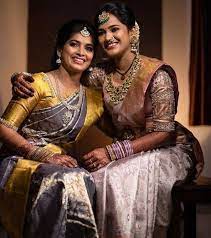In the realm of Indian textiles, Kanjivaram sarees stand as an epitome of timeless elegance and exquisite craftsmanship. Originating from the town of Kanchipuram in Tamil Nadu, these sarees are celebrated worldwide for their luxurious silk fabric, rich colors, and intricate motifs. Kanjivaram sarees, also known as Kanchipuram Silk sarees, hold a special place in South Indian culture and are a popular choice for weddings and other festive occasions. This article explores the rich heritage and craftsmanship behind Traditional Kanjivaram Sarees, highlighting their significance as Bridal Silk Sarees and their enduring appeal.
A Legacy of Craftsmanship
Kanjivaram sarees have a history dating back several centuries, rooted deeply in the handloom tradition of Tamil Nadu. Known for their durability and opulence, these sarees are meticulously woven using pure mulberry silk threads. The distinctive feature of Kanjivaram sarees lies in their unique weaving technique, where the silk saree’s body and border are woven separately and then interlocked with precision.
The motifs adorning Kanjivaram sarees are inspired by South Indian temple art, nature, and mythology. Traditional designs include peacocks, elephants, checks, and floral patterns, intricately woven using gold or silver zari threads. The pallu (the decorative end-piece of the saree) is often the highlight, featuring elaborate motifs and designs that add to the saree’s grandeur.
Bridal Silk Sarees Par Excellence
Kanjivaram sarees are synonymous with bridal attire in South India, especially in Tamil Nadu and Karnataka. A Kanjivaram Silk saree is considered auspicious and is often passed down through generations as a cherished heirloom. Brides adorn themselves in these sarees during weddings and other ceremonial occasions due to their symbolic significance and unparalleled beauty.
The bridal Kanjivaram saree typically features vibrant colors such as red, green, maroon, and gold, symbolizing prosperity and happiness. The intricate zari work and meticulous craftsmanship make these sarees a sight to behold, reflecting the bride’s status and the family’s wealth and taste.
The Weaving Process
Crafting a Kanjivaram saree is a labor-intensive process that involves several skilled artisans. The journey begins with sourcing the finest silk yarn, which is then dyed in vibrant hues using natural or synthetic dyes. The saree’s design is first conceptualized, and then the weavers meticulously set up the loom to begin the weaving process.
The weaving of a Kanjivaram saree can take anywhere from a few days to several weeks, depending on the complexity of the design and the intricacy of the motifs. Each saree is a masterpiece, showcasing the weaver’s expertise and dedication to preserving this ancient craft.
Kanchipuram Silk Sarees Today
In modern times, Kanjivaram sarees have evolved to cater to contemporary tastes while preserving their traditional charm. Designers experiment with motifs, colors, and combinations to appeal to a broader audience both in India and abroad. The demand for Kanjivaram sarees continues to grow, with enthusiasts appreciating not only their aesthetic beauty but also their cultural significance and craftsmanship.
Fashion designers often collaborate with traditional weavers to create fusion sarees that blend traditional motifs with modern silhouettes. This fusion has helped Kanjivaram sarees transcend regional boundaries and become a global fashion statement, worn by women who appreciate fine craftsmanship and heritage.
Preserving Heritage and Sustainability
The handloom sector plays a crucial role in preserving India’s cultural heritage and promoting sustainable fashion practices. Kanjivaram sarees are handwoven, supporting livelihoods in rural communities and empowering skilled artisans. The use of natural fibers and dyes contributes to sustainable fashion, making Kanjivaram sarees an eco-friendly choice for conscientious consumers.
Efforts are underway to protect the authenticity and integrity of Kanjivaram sarees through geographical indication (GI) tags and certifications. These measures ensure that only sarees woven in Kanchipuram with traditional methods and materials can bear the prestigious label of a Kanjivaram Silk saree.
Conclusion
Kanjivaram sarees are not just garments; they embody centuries of craftsmanship, culture, and tradition. As Bridal Silk Sarees, they symbolize auspiciousness and heritage, making them a cherished part of South Indian weddings. Their intricate designs, vibrant colors, and luxurious feel continue to captivate saree enthusiasts worldwide. Whether worn for weddings, festivals, or special occasions, Kanjivaram sarees remain a timeless choice, showcasing South India’s finest handloom tradition and craftsmanship with each intricately woven thread.




